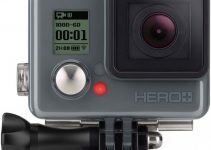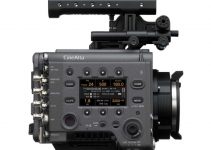A trade show like CES is not the place you’d usually expect a company to make their announcements, at least, not those referring to their professional equipment. But that is exactly what happened a few days ago when Canon unveiled the 1DX Mark III, their latest flagship DSLR.
With an unexpected and bold move, the 1DX Mark III took the main stage of Canon’s booth, getting a lot of appraisals. On such occasions, however, there’s always a risk of underestimating some of the main characteristics of the just-released product. Fortunately, filmmaker Armando Ferreira has got his hands on the newcomer while focusing our attention on a few key aspects of the 1DX Mark III that every videographer should consider before taking the leap. Let’s take a look.
We have to consider where is this camera going to place itself inside Canon’s lineup: this is going to be the flagship in the DSLR compartment, a sector that is mainly populated but still photographers at the moment. That means that this is first of all a great camera for photographers and, on top of that, it shoots high-quality videos.
Those video makers who were hoping that Canon was going to release a camera that would kill the market share of the EOS C200 will be disappointed. But that’s going to introduce the first point, and that’s the hidden cost of the camera.
#1 – The hidden cost
Not only because the cost of the 1DX Mark III is a false one (as it is for many other cameras, let’s be clear) as there are many hidden expenses associated with the purchase of a camera like that. For starters, you should spend a few hundred dollars on media. Shooting on CFast an hour of Raw footage can easily top $1,000. Not bad, uh?
And then you need storage to archive and ingest the files as well as a machine powerful enough to edit them flawlessly. There’s a lot to consider! Anyway, going back to Armando’s video, there are two other main aspects he focuses on (besides the price of the camera) that are not covered extensively in the forums as they should.
#2 – The Codec
As of the day this article is being written, there is a big surprise waiting for those who are planning to use the camera for shooting video. Since the codec is slightly different between the C200, the C500, and the 1DX, you won’t be able to edit the 1DX Mark III footage in Premiere Pro CC without transcoding it first. At the moment, the only NLEs that support those files natively are AVID Media Composer and Final Cut Pro.
An update will surely be hitting your editing machine down the line, but until then, keep this flaw in mind if you’re set to shoot a gig in the meantime. Oh, and as we’re speaking of differences, the Log profile on the 1DX Mark III is not the same either! Don’t expect the great dynamic range captured when shooting in Log on the Canon C200, you’ll get a profile more akin to that one available on the EOS R.
#3 – The Recording Limit
Like many other DSLRs, there’s a huge difference from the cameras that are… well, cameras: the recording time. The 1DX Mark III has a recording limit that is set at 30 minutes, meaning that if you plan to use it much as your A-camera for interviews and documentaries, you must be aware of the limitation.
You can easily circumvent this drawback with an external recorder (another hidden cost!) but it’s crucial to know about it beforehand, right?
So, all in all, the 1DX Mark III seems to be an excellent still photography camera, there’s no doubt about that. Does it shoot tremendous videos, and has great capabilities? Yes, indeed.
Should you dive headfirst and buy it immediately? Hell no! Take your time and consider all the implications, it’s a great camera, but it may not be the right one for you.
[source: Armando Ferreira]
B&H Order Link:
Canon EOS-1D X Mark III DSLR Camera
Disclaimer: As an Amazon Associate partner and participant in B&H and Adorama Affiliate programmes, we earn a small comission from each purchase made through the affiliate links listed above at no additional cost to you.




